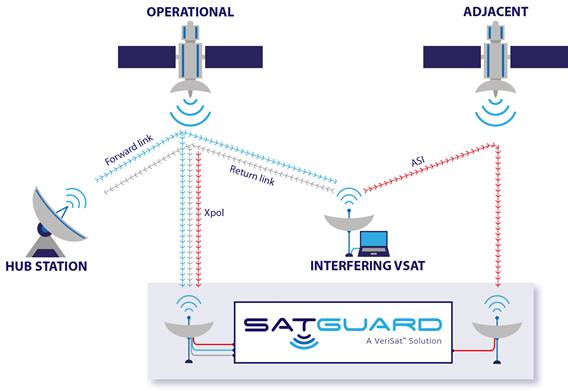With the growing number of satellite user terminals (VSAT) and new types of satellite architectures, radio frequency interference caused by misaligned equipment has become a serious issue for satcom operators and service providers, impacting the quality of service offered, revenues and operational costs. Combatting the problem is complicated, time-consuming, and resource-intensive due to the use of shared inbound frequencies.
To address this problem, ESA supported the creation of a novel solution for mitigating and resolving interference from VSAT terminals. Called SatGuard, this ARTES 5.2 project developed techniques for effectively detecting the VSAT terminals that interfere with adjacent satellites. The project leader, VeriSat (Norway), now has a working system which is able to identify the level of interference and the terminal (through its terminal ID) that is the source of the interference. SatGuard supports multiple satellite system access protocols.

A proof-of-concept version of SatGuard supporting the Digital Video Broadcasting Return Channel System standard (DVB-RCS) has already been tested with satellite operators SES and Eutelsat. SatGuard was also demonstrated at Satellite 2015 in Washington and CommunicAsia 2015, with great interest in it shown by satellite operators.
“SatGuard is a major breakthrough for the VSAT industry,” said Domenico Mignolo, head of Ground Segment Technologies & Products at ESA. “It is a cost-effective and easy to implement solution, and is a major step to continue improving the quality and reliability of satcom services.”
Although SatGuard still requires additional development to turn it into a full-fledged commercial product, various operators are already using it with excellent results, Mignolo points out.




